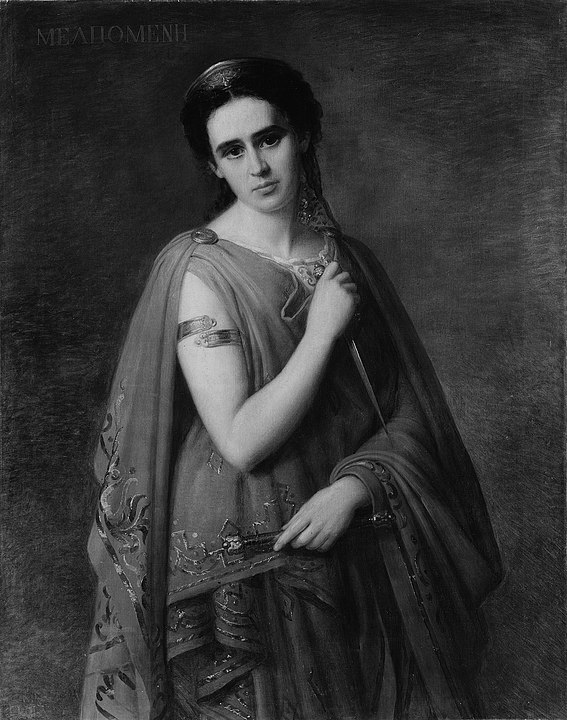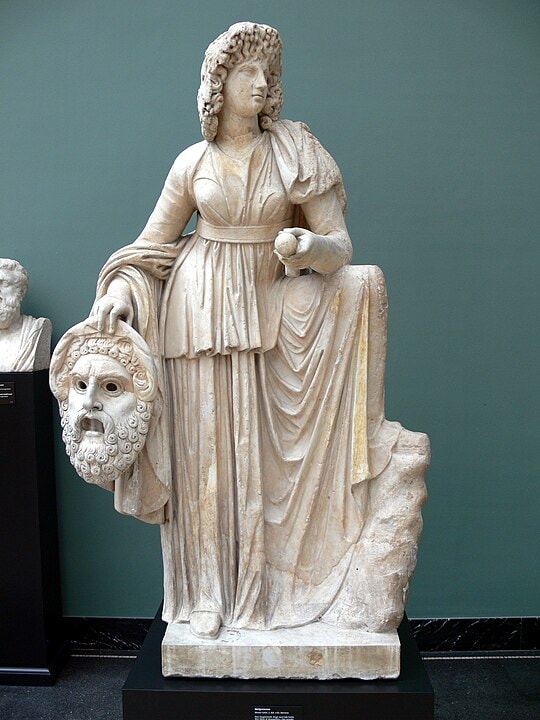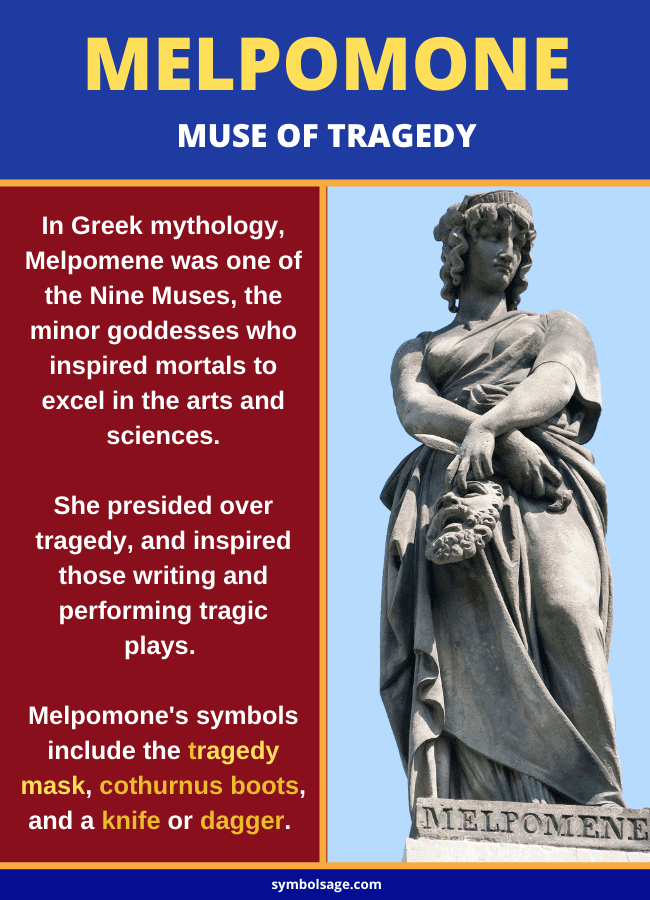
Table of Contents
In Greek mythology, Melpomene was famous as one of the Nine Muses, the daughters of Zeus and Mnemosyne. She and her sisters were known as the goddesses who created the inspiration for each aspect of scientific and artistic thought. Melpomene was originally the Muse of chorus but she later became known as the Muse of tragedy. Here’s a closer look at the story of Melpomene.
Who Was Melpomene?
Melpomene was born to Zeus, the god of thunder, and his lover Mnemosyne, the Titanness of memory, at about the same time as her sisters. The story goes that Zeus was attracted by Mnemosyne’s beauty and he visited her nine nights in a row. Mnemosyne became pregnant on each night, and gave birth to nine daughters on nine consecutive nights.
Their names were Calliope, Clio, Euterpe, Melpomene, Thalia, Terpsichore, Polyhymnia, Urania and Erato and they were all gorgeous young maidens, having inherited their mother’s beauty.

The girls became known as the Younger Muses so that they would be easily distinguished from the Elder Muses from an earlier time in Greek mythology. Each of them was linked to an artistic or scientific component . Melpomene became known as the Muse of tragedy.
When Melpomene and her sisters were little, their mother sent them to Eupheme, a nymph who lived on Mount Helicon. Eupheme nursed the Muses, and Apollo, the god of music and poetry, taught them everything he could about the arts. Later on, the Muses lived on Mount Olympus, seated alongside their father, Zeus and were mostly found in company with their mentor Apollo and Dionysus, the god of wine.
From Chorus to Tragedy – Melpomene’s Changing Role
Some sources state that she was initially the Muse of Chorus and the reason she changed to being the Muse of tragedy remains unknown. According to certain ancient sources, theater hadn’t been invented in Ancient Greece during the time Melponeme first became known. She became the Muse of Tragedy much later during the classical period in Greece. Translated, Melpomene’s name means ‘to celebrate with song and dance’, having been derived from the Greek verb ‘melpo’. This is at odds with her role in relation to tragedy.
Representations of Melpomene
Melpomene is typically depicted as a lovely young woman, wearing cothurnus boots, which were boots worn by the tragic actors of Athens. She often holds a tragedy mask in her hand, which actors wore when performing in tragic plays.
She’s also often portrayed holding a club or a knife in one hand and having the mask in the other, while leaning on a pillar of some sort. Sometimes, Melpomene depicted wearing a crown of ivy on her head as well.

Melpomene and Dionysus – An Unknown Connection
Melpomene has also been associated with the Greek god Dionysus, and they’re usually seen depicted together in art for unknown reasons. In some paintings of the goddess, she’s shown wearing a wreath on her head made of grapevines which was a symbol associated with Dionysus.
Some sources state that it’s probably because her domain was originally said to be song and dance which were both important in the worship of the wine god, and others say that they may have had a relationship.
Melpomene’s Offspring
Melpomene was said to have had a relationship Achelous, who was a minor god of the river. He was also the son of Tethys, the Titan goddess. Achelous and Melpomene got married and had several children, who became known as the Sirens. However, in some accounts, the Sirens mother was said to be one of three Muses, either Melpomene or one of her sisters: Calliope or Terpsichore.
The number of Sirens differ according to various sources since some say that there were only two and others say there were more. They were very dangerous creatures who would lure nearby sailors with their lovely, enchanting singing so that their ships would wreck on the rocky island coast.
Melpomene’s Role in Greek Mythology
As the goddess of tragedy, Melpomene’s role was to inspire the mortals in their writings or performances of tragedy. The artists of Ancient Greece invoked her guidance and inspiration whenever a tragedy was being written or performed by praying to the goddess and making offerings to her. They would would most often do this at Mount Helicon, which was said to be the place where all mortals went to worship the Muses.
Aside from her role as the patron of tragedy, Melpomene also had a role to play with her sisters on Mount Olympus. She and her sisters, the other eight Muses, provided entertainment to the Olympian deities and delighted them with their singing and dancing. They also sang stories of the gods and heroes, especially of the greatness of Zeus, the supreme god.

Melpomene’s Associations
Melpomene appears in the writings of many famous Greek authors and poets including Hesiod’s Theogony and the Orphic Hymns. According to Diodorus Siculus, Hesiod mentions the goddess of tragedy in his writings as the goddess who ‘charms her listeners’ souls’.
Melpomene has also been depicted in several famous paintings. One such painting is the Greco-Roman moisaic which is now placed in the Bardo National Museum in Tunisia. It depicts the ancient Roman poet, Virgil, with Melpomene on his left and her sister Clio on his right.
In Brief
Melpomene remains an important goddess to the Greeks, especially considering how important drama was to them. Even today, some say that whenever a tragedy is written or being performed successfully, it means the goddess is at work. However, aside from the story about how she was born and the fact that she may have been the mother of the Sirens, not much is known about the Muse of tragedy.








